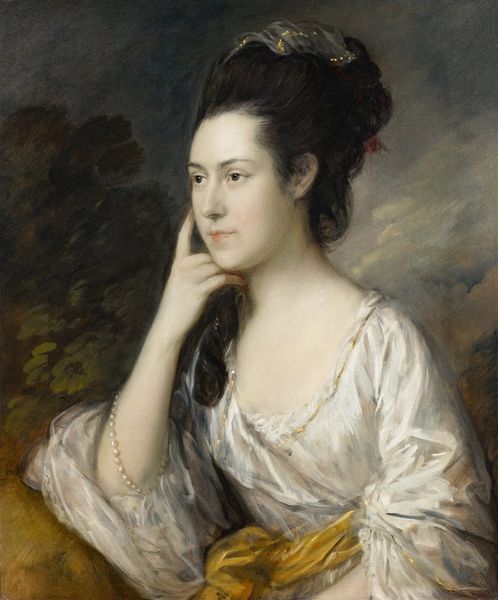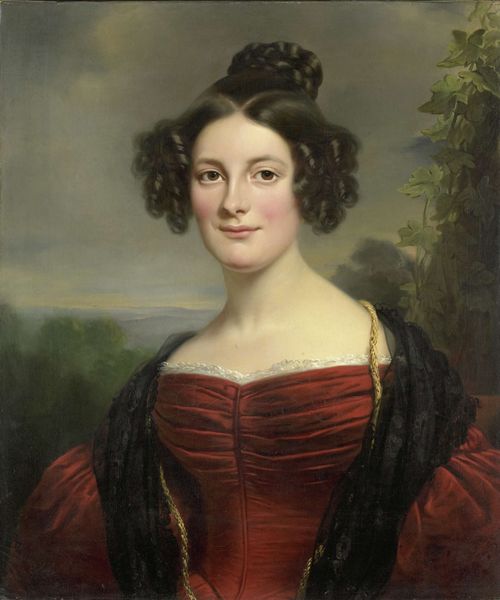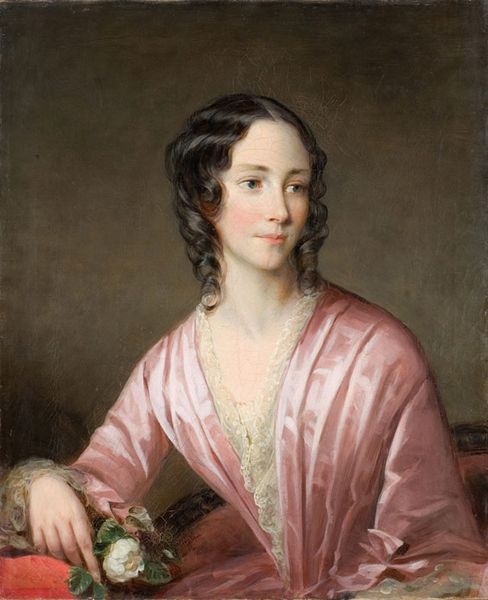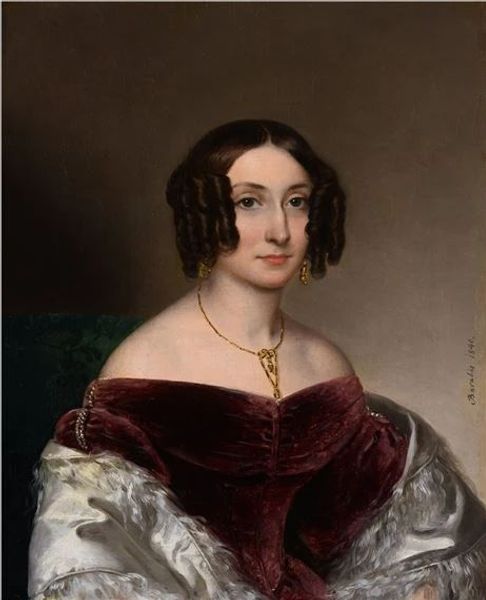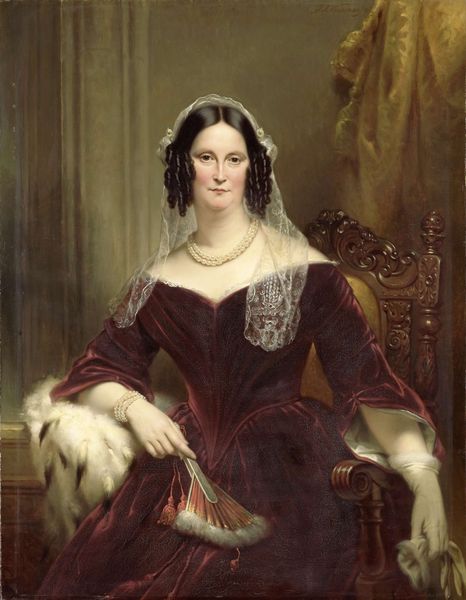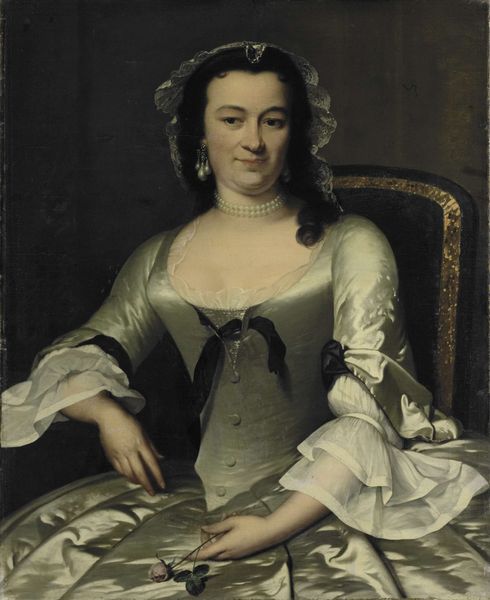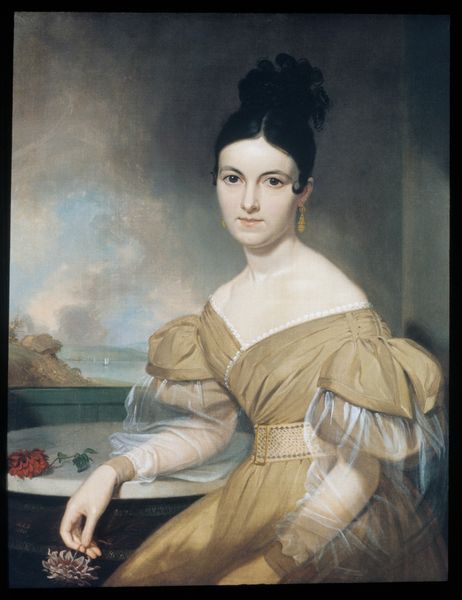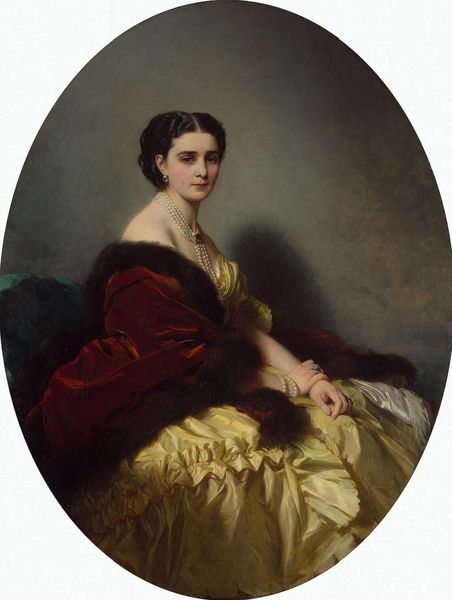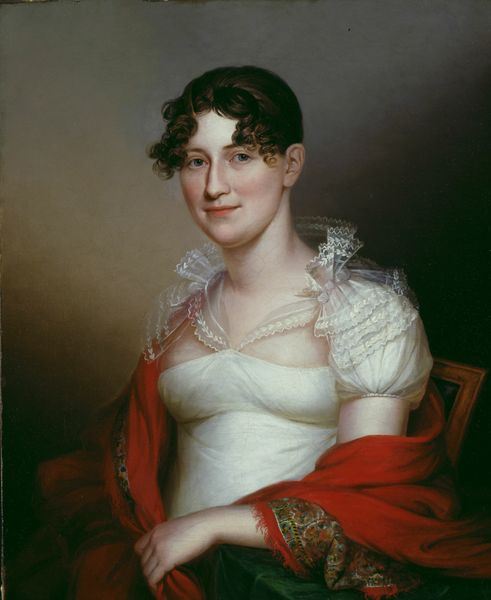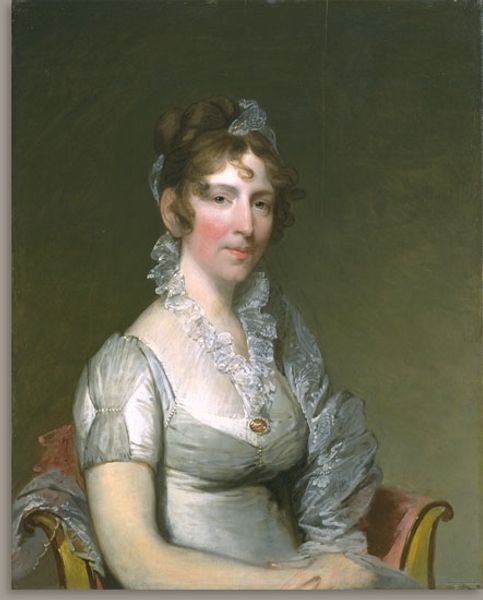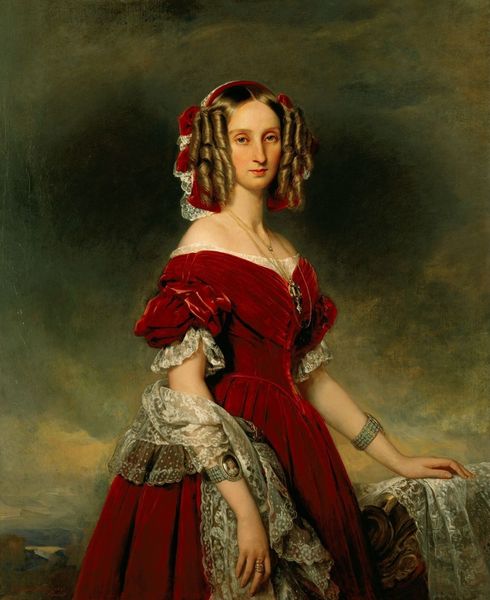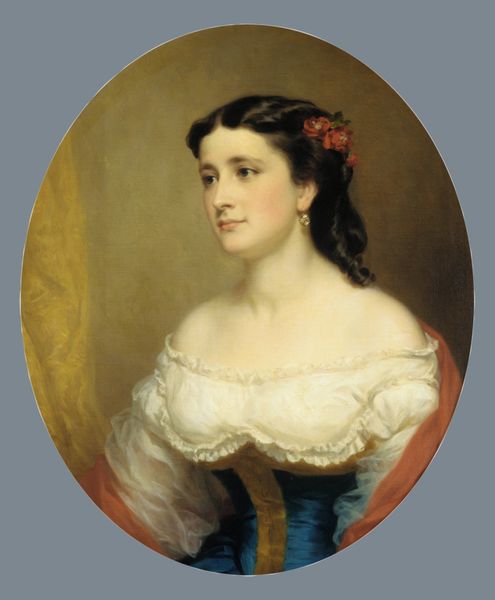
Portret van Abrahamina Henriëtte Wurfbain (1808-1883), echtgenote van Jacob de Vos Jz 1837
0:00
0:00
janadamkruseman
Rijksmuseum
painting, oil-paint
#
portrait
#
painting
#
oil-paint
#
romanticism
#
realism
Dimensions: height 112.5 cm, width 99 cm, depth 5.6 cm
Copyright: Rijks Museum: Open Domain
Curator: This is Jan Adam Kruseman's 1837 portrait of Abrahamina Henriëtte Wurfbain, the wife of Jacob de Vos Jz. It’s oil on canvas and currently resides here at the Rijksmuseum. Editor: She looks incredibly self-possessed, doesn’t she? Almost melancholic. There's a reserved stillness to her pose against the backdrop and plush fabric; it certainly captures the weight of societal expectations placed on women during this era. Curator: Absolutely. Her dress, while seemingly simple in its whiteness, speaks volumes. The high waistline, the delicate jewelry and fabrics...these are all signs of wealth and status. Note the symbolism, the deliberate arrangement of details that are not accidental! Editor: But how much of this 'arrangement' truly reflects her lived reality? As the wife of a prominent figure, her identity would have been deeply intertwined with his, yet she gazes out at the viewer, inviting contemplation of the individual beneath. Her clothing is not only fashionable but could be interpreted as a symbol of societal constraint; she is clothed yet contained within its rigid framework. Curator: Precisely! The Romantic era was obsessed with emotion and the inner self, but within very strict confines. Wurfbain is elegantly posed. She embodies composure and perhaps a touch of longing. Her accessories, too, aren't merely decorative, and speak to family lineage, social connections...a language we have almost forgotten how to read. Editor: And I wonder what it meant for her to be captured by a male gaze within such an intricate construction of class, beauty, and womanhood? Did it grant a kind of permanence, or reinforce confinement? I mean, it is really about visibility within very specific and carefully constructed limitations. Curator: A fascinating thought. What stays with me is the duality. It simultaneously idealizes and reveals a sense of the individual behind that persona. Kruseman memorializes Wurfbain, but there remains an unsettling silence in her eyes that perhaps will always resist our reading. Editor: A haunting resistance. It seems, after all, that she retains her story despite its inscription into art history. I find myself drawn back to her face, not for what the artist has displayed but what still lingers just beneath.
Comments
No comments
Be the first to comment and join the conversation on the ultimate creative platform.
